[su_tabs]
[su_tab title=”Overview” disabled=”no” anchor=”” url=”” target=”blank” class=””]
GEOGRAPHY
Pico is the second largest island of the Azores, with 444.9 sq. km and with an elongated shape thanks to its 42 km of length and 15.2 km at its maximum width. It is dominated by the Volcano of Pico on its western half, it is 6 km away from the neighboring island of Faial and is populated by 14.148 inhabitants (census 2011). It is the most southerly island of the Central Group of the Azores Archipelago and part of the “triangle islands.” The highest point of the island, at 2350 m altitude, is also the highest point of Portugal, located at 28°23’58’’ longitude west and 38°28’07’’ latitude north.
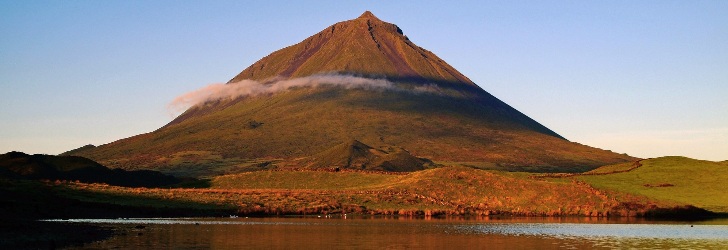
HISTORY
The discovery of this island by the Portuguese navigators took place sometime between 1449 and 1451, after the island of Terceira had already been spotted. In the beginning, it was known as King Dinis Island, and the current name comes up because the biggest Portuguese mountain lies there. It is believed that the island of Pico was the last island of the Central group to be populated, in an effort that basically mainly took place from the1480s onwards.
The settlers that arrived from the North of Portugal, after stopping over at the islands of Terceira and Graciosa, chose to settle at Lajes. During the first hundred years, and because of the influence of the nearby island of Faial, the economy was based on the production of wheat and dye plants. The dry, hot climate of some parts of the island and the mineral resources of the lava soils led to the introduction of vineyards, mainly of verdelho grapes. As time went by, the quality of the local wine and spirits became known inside and outside the island, thus contributing to an increase in the development of vineyards. The wine was exported to Europe and America, with verdelho wine attained international fame. So much so that it was even served at the tables of the Russian tsars.
The link to Faial is almost umbilical. On the one hand, the port for the export of products from Pico is in Horta. On the other hand, until the wine crisis of the nineteenth century a large number of Pico’s landowners came from the neighbouring island. During the 18th century, there were severe volcanic eruptions, which predicted the end of the golden era of verdelho wine production. By mid 19th century, most of the vines were viciously attacked by diseases such as grape-mildew and phylloxera. Faced with their losses, with tradition and prestige disappearing in a cloud of smoke, the locals were left with the choice of emigrating to Brazil or to North America. Those who decided to stay had to live off the sea.
As far back as the 18th century, the island was also involved in whaling. English and North-American fleets looked for sperm whales in the waters surrounding Pico. The ships used the quays of the island to rest the crews, acquire fresh supplies, repair the boats and recruit new sailors to help them fight the giants of the oceans. During the second half of the 19th century, the community gave its first steps towards whaling. The activity of hunting sperm whales expanded and spread to the other islands until the 20th century, when it started to decline. This activity came to an end in 1986 with the ban on whale hunting, when Portugal signed the Bern Convention.
Recovering and reinventing very old traditions, Pico is still very much linked to sperm whales. The tourism industry is based on whale watching, with cetaceans now being protected species. Wine production has also acquired a new importance with its contribution to the local economy that is dominated by farming, cattle breeding and fishing. The uniqueness of Pico vine culture is internationally recognized, with the classification of the Landscape of the Pico Island Vineyard Culture as World Heritage Site, by UNESCO, in 2004
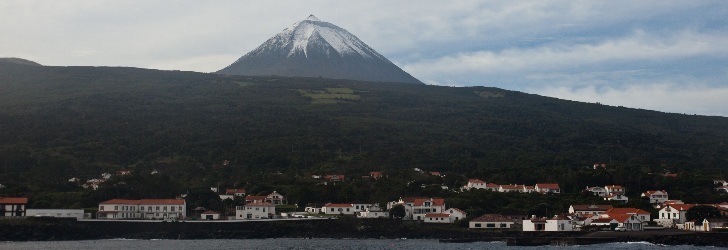
[/su_tab]
[su_tab title=”Nature” disabled=”no” anchor=”” url=”” target=”blank” class=””]
THE GREY ISLAND
The extensive lava fields that dot the landscape of the island, and that locals calls lajidos or terras de biscoito (cookie land) according to their plain or irregularity, serve as the motto chosen for the color grey of the island. And also the corrals of the vineyard, the maroiços on agricultural land, the paths walls, trails and land divisions refer to this tone, interspersed with green vegetation.
The huge volcanic cone of Pico Mountain rises majestic, cutting the blue of the sky or allowing itself to be rolled in a protective blanket of clouds. To the east of this massive volcano, the island stretches in a long volcanic ridge, with lush patches of endemic flora and green pastures, where are about two hundred small basaltic scoria cones and about twenty lakes. These and other bodies of water, including ponds and bog lands more or less flooded, serve as habitat for the residents and migratory birds, like the grey heron.
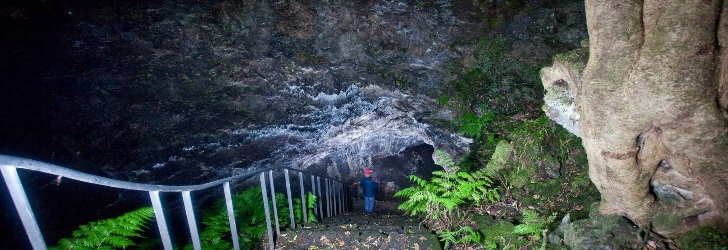
VOLCANIC LANDSCAPES
Imposing, majestic, magnificent, are some of the many nicknames that the Pico Mountain possesses, thanks to its maximum altitude of 2,350 m and 19 km average diameter of sea level. The third biggest volcano in the Atlantic imposes on the landscape of the island, exerting an irresistible attraction for almost of the corners of Pico, and for many sites of the neighbouring islands. In its crater lodges a lava cone known as Piquinho and permanent fumaroles which charge to remember their volcanic nature. At the height of approximately 1,250 metres, where the climb begins to the mountain, one can almost see the entire island including the neighbouring islands of Faial and São Jorge. The climb to the summit provides a great deal of pleasure, due to the extraordinary deed of the climb and to the breathtaking panoramas. On a clear day, there is the additional prize of also viewing the profiles of the islands of Graciosa and Terceira.
In the eastern half of the island is the Achada Plateau that dominates, with a volcanic ridge with approximately 30 km long between the Capitão Lake and the Ponta da Ilha. Its about 200 volcanic cones and surrounding areas are house for bogs, ponds or lakes as the Grotões, Rosada, Paul, Landoral, Caiado, Peixinho and Negra. This area is one of the most important palces in the Azores in terms of endemic vegetation, cedars, heaths, sanguinho or trovisco in large and dense patches
Although all of these features, the lava fields are the genetic symbol of the island with numerous and diverse proves of volcanic activity which gave birth to the island and the reminiscent of other exotic volcanic islands, the Hawaiian Islands. In some cases, these lava fields are associated with lava eruptions witnessed by people who, fearful, designated Mistérios (mysteries) such rocky terrains that born from the Earth fire. In this way, born the Praínha Mystery (16th century), Santa Luzia, São João and Silveira Mysteries (18th century).
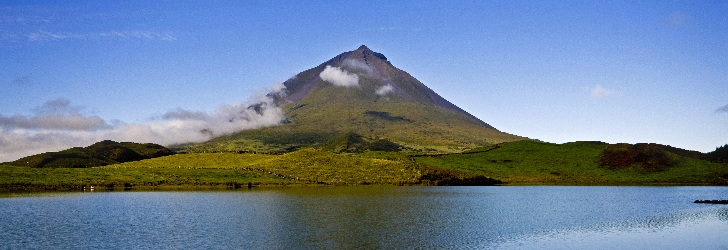
COASTLINE
The dark gray basalt, the crystal blue sea and the milky white of foam represents the colourful triology of the coast of Pico Island. No beaches but with beautiful bays and coves, the island offers many bathing areas, often take the advantage of the coastline to provide a unique natural landscape. In contrast, high cliffs mark certain sections of the shoreline of Pico, rivalling those with São Jorge on its marvel and grandiosity: the Terra Alta lookout provides this vision.
Volcanic arches, caves and benches are spread by the litoral coast, giving passage to land of vineyards with their typical wine cellars. In many places of the island, as in Ribeiras, Lajes do Pico or in Ponta do Mistério, widespread lava deltas remain as a eloquent testimony of the constant struggle between the creative power of volcanoes and the destructive actions of the sea.
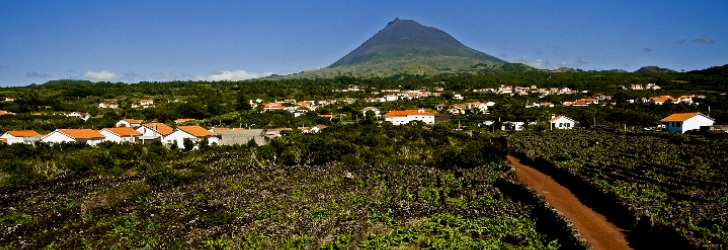
[/su_tab]
[su_tab title=”Activities” disabled=”no” anchor=”” url=”” target=”blank” class=””]
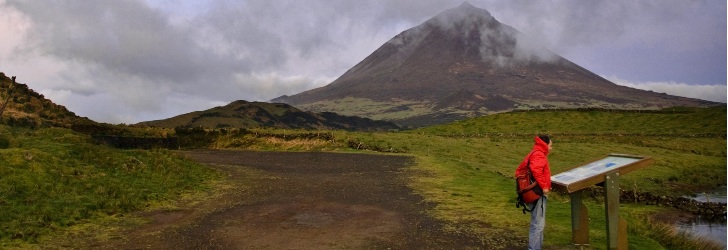
Whale watching is the extension of the whaling tradition of the island adapted to current times. The waters around Pico can be enjoyed by sailing or kayaking. A boat ride also offers views of the coastline, which is ideal for fishing from the rocks or diving. There are also some tidal, lava pools for swimming.
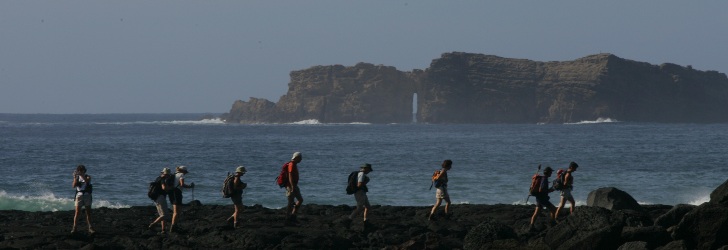
Anybody can climb the mountain, but it is a demanding climb, so it is most appropriate for those who are physically and mentally fitter, besides the need to wear special clothes and shoes. When climbing accompanied by a guide, one gathers more detailed information on the vegetation and on the history of the biggest volcano of the Azores. The out-and-return climb takes at least four hours. Some tourist guides propose a night stay at the summit to appreciate the sunset and the first rays of the morning sun.
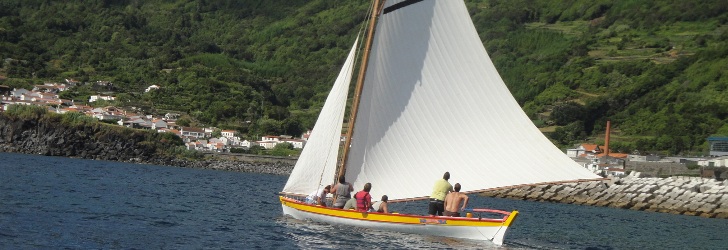
With the lava tunnel of the Gruta das Torres (towers cave)it is possible to experience the underground world of the island, taking as its starting point the well-equipped visitor center.. Speleology finds a fertile ground on the island of Pico due to dozens of volcanic caves like those at Frei Matias Silveira,Montanheiros or at Henrique Maciel which can be explored in the company of a guide and by using proper equipment. The well-structured network of walking trails of the island and bicycle rides, horse and donkey rides also offer a calm ride to appreciate the landscape. Adrenalin goes up when riding a mountain bike, a quad-bike or a cross-kart or doing climbing in some sections already prepared.
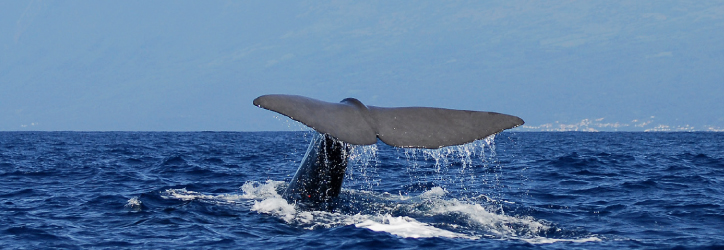
[/su_tab]
[su_tab title=”Heritage” disabled=”no” anchor=”” url=”” target=”blank” class=””]
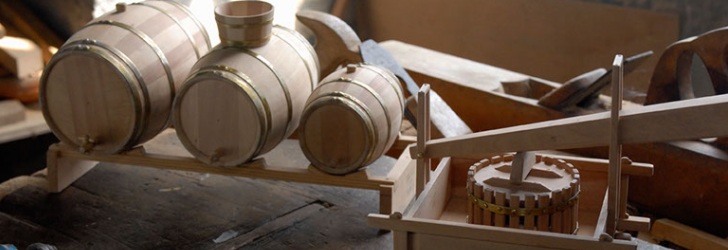
WORLD HERITAGE
In order to protect against the wind and sea air and to take the best advantage from the geological and weather conditions of the areas with lava plaques known as lajido the land was divided into a most impressive weave of black stone. The segmented horizon ends in the so-called currais – squares delimited by basalt walls where grapevines grow. The localities of Criação Velha and Santa Luzia are the best examples of this art of dividing the fields, which corresponds to hundreds of miles of stone walls hardly raised. These lands, a mixture of nature and ancestral cultural practices, include the Landscape of the Pico Island Vineyard Culture has been classified by UNESCO as a World Heritage Site since 2004.
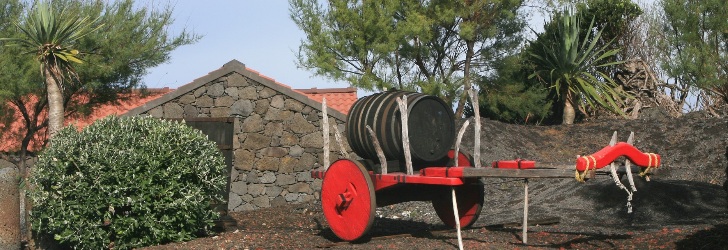
The so-called maroiços are unique architectural elements in the archipelago. Found mainly at Madalena area, are heaps of black rocks cut loose from lava flagstones to allow the plantation of vineyards, remain standing as a reminder of the tenacity of the local population. Next to the lava deposits, one finds the rilheiras, marks left by the cattle wagons that used to transport the grapes and the barrels, and the rola-pipas, slopes by the shore that were prepared for the barrels to slide all the way down to the waiting boats.
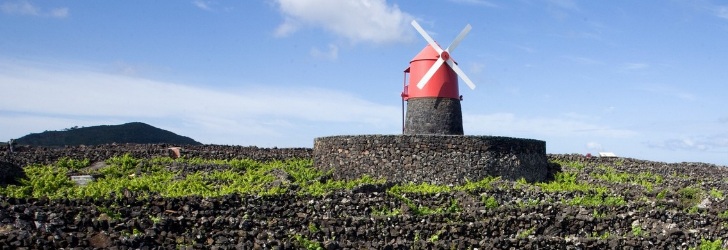
ARCHITECTURE
Besides their churches and rural architecture, the architectonic legacy of Pico is partially associated to the farming of grapevines. In the area of Areia Larga, there are manor houses that were used for the temporary accommodation of landowners who normally resided on the island of Faial. Dating back to the 18th and 19th centuries, these houses are known for their hard lines and for the additional supporting facilities, such as tidal wells, cellars and storage. At the Adegas do Vinho (Win Cellars), now transformed to cater for rural tourism, the walls covered with volcanic stones intertwine with the vegetation and the sea. The living memory of the golden era of the verdelho wine has a new chapter in the Museu do Vinho (Wine Museum), which was installed in the old summer house of the friars of the Carmelita Order of Faial. It showcases collections of house farming and distilling equipment and barrels. The dragon-trees add a stagy touch to the press site that has resisted the ravages of time.
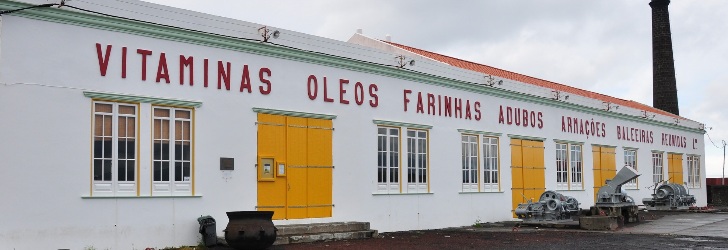
The volcanic origin of the island can be seen in the houses built in Cabrito, Arcos, Lajido, Cachorro and Calhau . The dark colour of the basalt walls contrasts with the white frames of the windows and the bright reds used to pain the wooden doors.
CULTURE
Pico is the centre of the main vestiges of the Azorean whaling era. The localities of Lajes, São Roque, Calheta de Nesquim or Ribeiras invite you for walks to discover the picturesque ports, old whalers and the small streets with typical homes. The Whaling Association has various sites, such as the Museu da Indústria Baleeira (Whaling Industry Museum) in São Roque; located in the premises of the old association, it has on display furnaces, boilers and other equipment that was used to process sperm whales. Photographs, utensils and models of canoes complete the collection at the Museu dos Baleeiros (Whalemen’s Museum) in Lajes do Pico, where the exhibition was set up in the old storage facilities of wailing boats and includes a canoe, harpoons and other tools used for whale hunting and pieces of scrimshaw (engravings or sculptures on the teeth of whales).
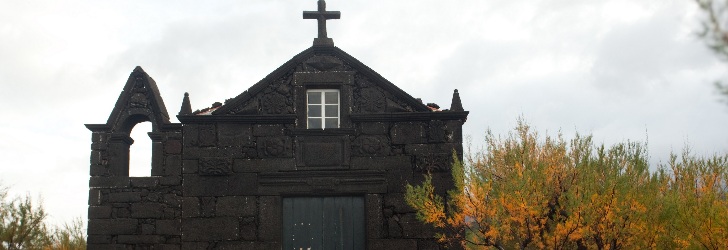
At the old naval construction centre of the Archipelago, located at Santo Amaro, some boats are still being built by hand. At this shipyard, it is possible to climb on board some boats during their stage of assembly. Next door, there is a private museum provides a human link between the island and the whaling industry.
HANDICRAFTS
The Santo Amaro Handicrafts School and the Regional Handicrafts School in São Roque are the two institutions that keep artisan traditions alive, such as the production of straw hats, flowers made out of fish scales and lace crocheting. They also portray the local history by producing wonderful miniature wooden figures of whaling boats and of equipment linked to the wine industry, such as cattle carts transporting barrels.
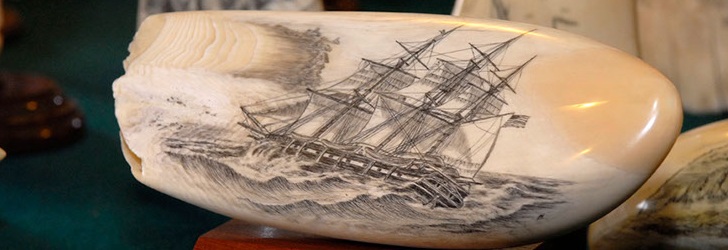
[/su_tab]
[su_tab title=”Festivities” disabled=”no” anchor=”” url=”” target=”blank” class=””]
Besides the Holy Ghost Festivals that are celebrated on all the islands, the people of Pico dedicate special attention to their devotion for the Senhor Bom Jesus Milagroso. The festivities take place at São Mateus just before or after August 6th, and are based on the veneration of the pilgrims for a figure from Brazil that is exhibited in the Bom Jesus Milagroso Sanctuary. In the town of Madalena, the festival dedicated to the patron saint of the municipality, Saint Maria Madalena, includes religious, sporting and cultural activities during the month of July.
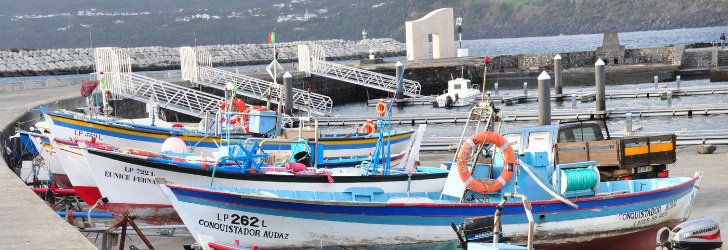
In São Roque, the event called Cais de Agosto combines musical shows with displays of handicrafts and sporting events. In Lajes, the Semana dos Baleeiros (Whaling Week) brings together the homage paid to those who participated in this important event of the history of the Azores and an eclectic programme that takes place at the end of the summer. In September, Madalena offers the Festas da Vindima (Grape-picking Festival), with dances and ethnographic events centred on wine production.
The whaling canoe races are a symbol of Pico. The regattas, on wood boats made for six rowers, are often present in the various festivities that take place on the island and are created competitions between crews from all over the island and the other islands of the triangle.
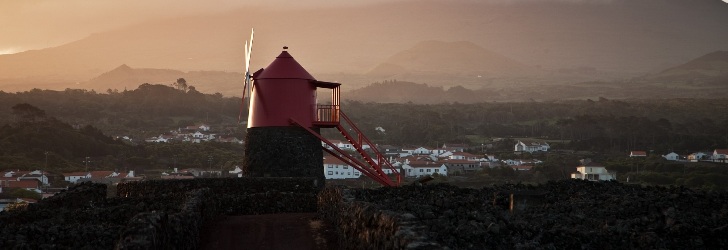
[/su_tab]
[su_tab title=”Food & Drinks” disabled=”no” anchor=”” url=”” target=”blank” class=””]
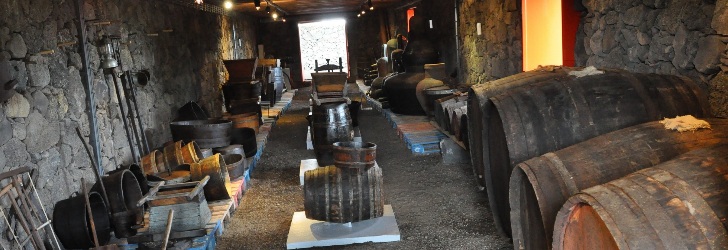
As a land with wine tradition, the white and red wines that are produced in Pico are much appreciated on the whole of the Archipelago. Steadily, there has been an attempt to recover the past prestige of the verdelho wine production, improving the production and innovating the products “Basalto”, “Lajido” and “Terras de Lava” are designations of Pico wine that are related with a relationship between man and nature that really appreciates the island. The wine cooperative can be visited in Areia Larga. It stores the local wine production that is already made from new types of grapes. The fig and loquat spirits also have some fans, and old, copper distillers in working condition can still be found. Liqueurs such as Angelica and other fruit liqueurs are on offer for those with a sweet tooth.
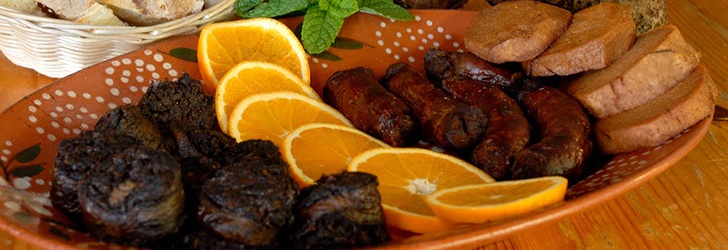
The island has always been a big producer of fruit. Its figs, bright red in the inside, are famous. The honey that is produced from the flower of the Australian cheesewood and the São João soft paste cheese complete the island’s list of food delicacies. As for dishes, the highlight goes to octopus stewed in cheiro wine, sausage with taro root, boiled beef and fish broth. Finally, pastries are limited to those that are traditionally prepared for the Holy Christ Festival of and for Carnival.
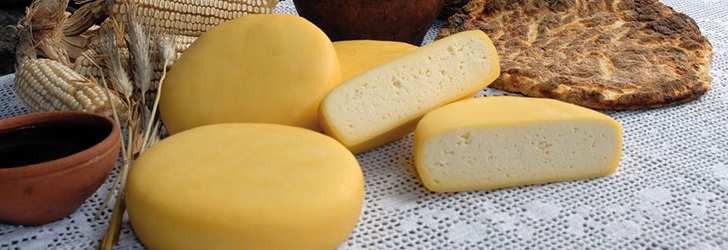
[/su_tab]
[/su_tabs]
